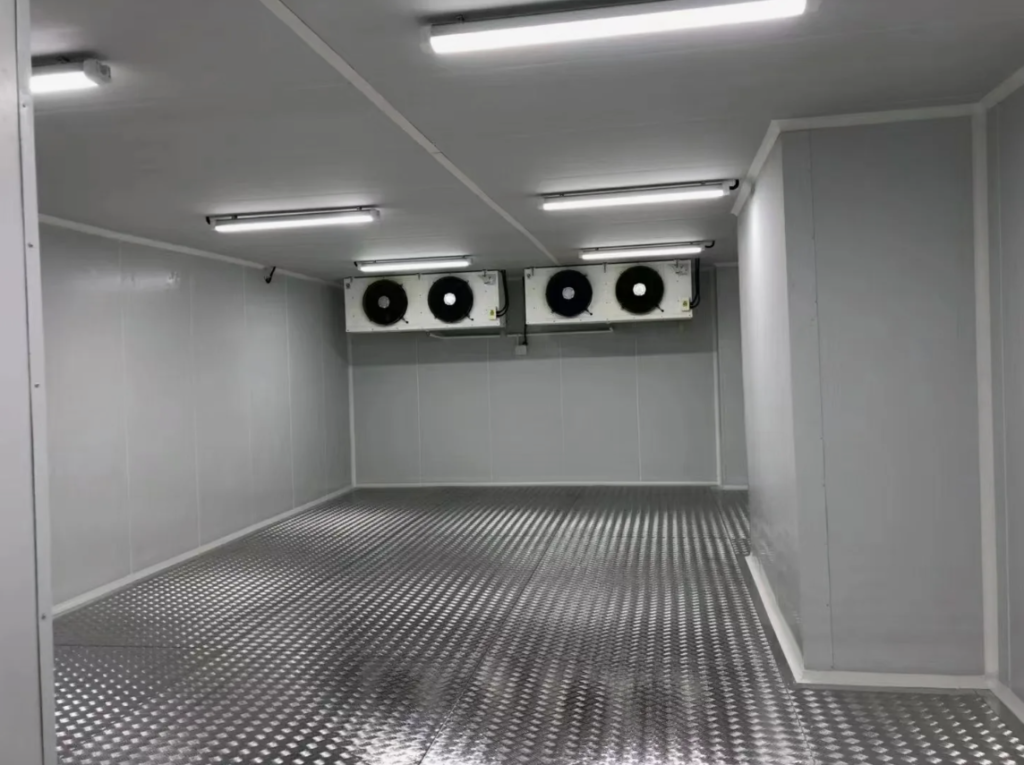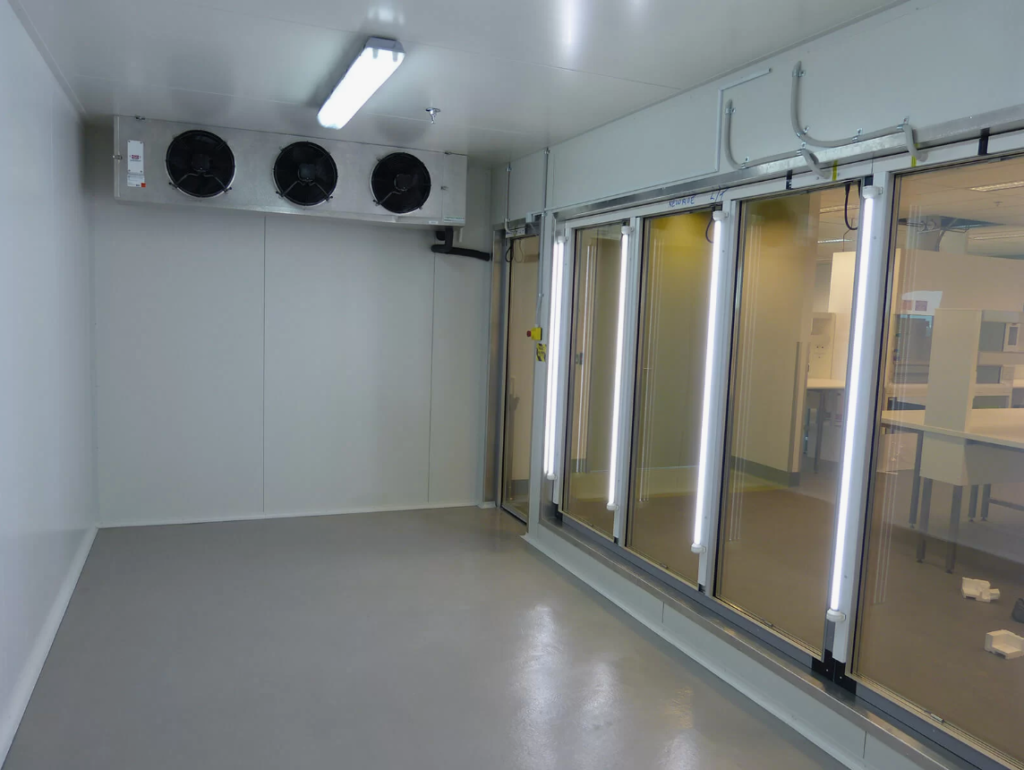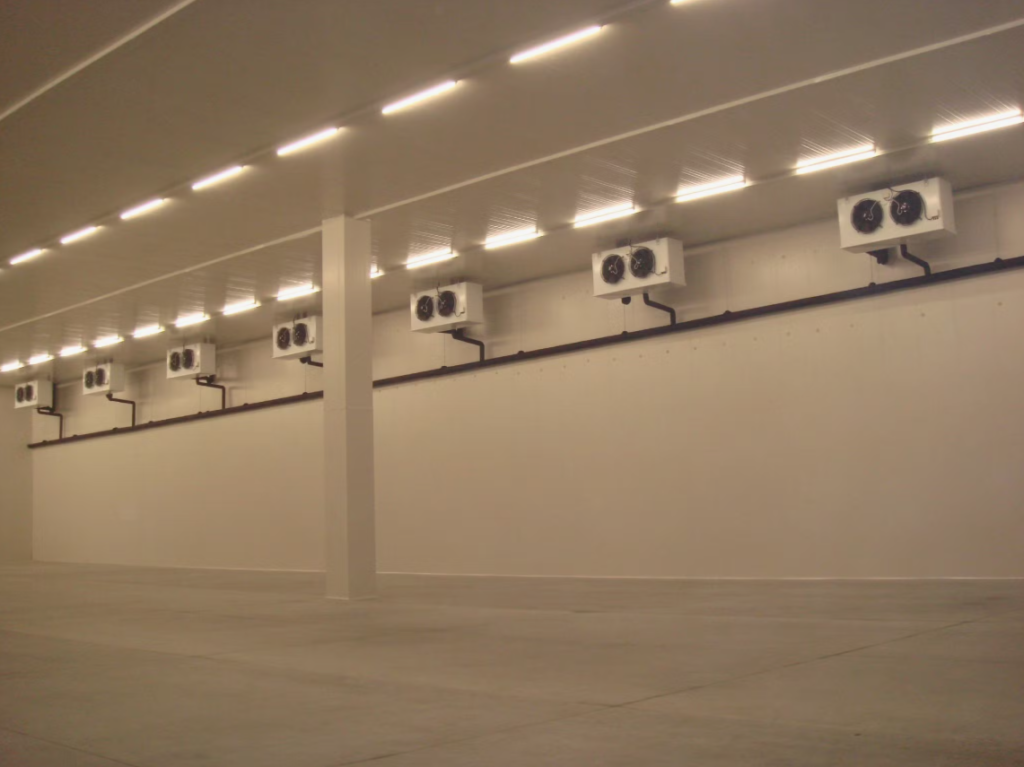Cooling rooms play an essential role in food preservation, logistics, and industrial production. It maintains a stable low temperature to slow down product spoilage and keep freshness. Many industries, including food processing, pharmaceuticals, and logistics, rely on cooling rooms daily. These rooms can range from small storage units to large industrial cold warehouses. A well-designed cooling room balances temperature, humidity, and air circulation to ensure quality and energy efficiency.
A Must For Modern Enterprises
A cooling room is a temperature-controlled space that stores perishable goods at low temperatures. It helps preserve food, extend product shelf life, and prevent bacterial growth. The temperature inside usually ranges from 0°C to 15°C, depending on the type of goods. For example, fruits and vegetables store best at 2–8°C, while beverages often need around 10°C.
Cooling rooms appear in supermarkets, hotels, food factories, and logistics centers. A small cooling room of 20 square meters can store up to 5 tons of food. Large-scale cooling rooms, like those in distribution centers, can cover over 1,000 square meters.
The main goal of a cooling room is to remove heat from products and maintain consistent conditions. Unlike a freezer room, it does not freeze goods but keeps them fresh for daily use or short-term storage.
Main Parts of a Cooling Room
A cooling room consists of several key parts that work together to maintain low temperatures. Each part plays a vital role in ensuring stable operation and energy efficiency.

The first part is the insulated panel system. The walls, ceiling, and floor use sandwich panels made from materials like polyurethane (PU) or polyisocyanurate (PIR). These panels prevent heat transfer from outside. For example, a 100 mm PU panel has a thermal conductivity of only 0.024 W/m·K, keeping temperature fluctuations under 1°C per hour.
The second part is the refrigeration system. It includes the compressor, condenser, and evaporator. The compressor circulates refrigerant, which absorbs heat from the cooling room and releases it outside. A 5 HP compressor can cool a 50 m³ room within one hour.
The third part is the air circulation and control system. Air coolers distribute cold air evenly and prevent hot spots. The temperature controller, sensors, and display unit allow precise adjustments. For example, a digital controller can maintain the temperature at 4.0°C ±0.5°C automatically.
The fourth part is the door and sealing system. Cooling room doors are insulated and fitted with tight magnetic gaskets to prevent air leaks. Automatic closing doors help reduce energy waste by up to 10%.
Finally, some advanced cooling rooms include monitoring systems. These systems record temperature data and send alarms during power failures or temperature deviations.

Each part must function smoothly to achieve reliable cooling and long-term efficiency. The better the materials and components, the more stable and energy-saving the cooling room becomes.
Design points
Designing a good cooling room requires a clear understanding of product needs, site conditions, and technical standards.
The first step is capacity planning. Designers must know how much and what type of product will be stored. For example, if the cooling room needs to hold 10 tons of fruit, the design volume should be around 50 m³. Extra space allows for air circulation and easy loading.
Next is temperature zoning. Different goods require different temperatures. Some facilities divide one large cooling room into zones. For instance, meat can be stored at 2°C and dairy at 5°C in the same facility by using separate air coolers.
The insulation thickness must match the target temperature and climate. In hot regions, panels of 120 mm thickness perform better than 75 mm panels. Data shows that thicker insulation reduces power consumption by 15%.

Refrigeration system selection also matters. The compressor capacity, refrigerant type, and cooling fan size must match the cooling load. An undersized system cannot reach the target temperature, while an oversized one wastes energy.
Airflow design affects cooling performance. Poor airflow leads to uneven temperatures. Engineers often place evaporators near the ceiling to allow cold air to drop evenly.
Lastly, safety and maintenance are key. Adding pressure gauges, defrost timers, and automatic alarms prevents costly breakdowns. Regular system checks every six months keep performance stable.
A well-designed cooling room balances cost, efficiency, and reliability, ensuring continuous and safe operation.
How to Produce and Install a High-Quality Cooling Room?
Production and installation directly affect the cooling room’s performance. A poor installation can cause air leaks, uneven cooling, and higher energy bills.

The production process starts with precise panel fabrication. Each panel must match the design dimensions within ±2mm. High-quality manufacturers use continuous production lines for PU or PIR panels. This ensures consistent density, flatness, and airtight joints.
During assembly, workers connect panels with tongue-and-groove joints and seal them with silicone to block thermal bridges. For example, a well-sealed joint can reduce heat loss by 5–8%.
Next comes the installation of refrigeration equipment. The compressor, condenser, and evaporator must connect with copper pipes. All pipe joints must be welded and tested for leaks. Pressure testing at 2.5MPa ensures no refrigerant loss.
Electrical wiring should follow strict safety codes. Control boxes must stay dry and accessible. Wires should have protective insulation sleeves to avoid moisture damage.
Finally, system commissioning verifies performance. Engineers test the room’s temperature stability for at least 12 hours. The difference between set and actual temperature should not exceed 1°C.

Proper production and installation make the cooling room efficient, reliable, and long-lasting. Each detail in the process contributes to overall energy savings and product safety.
Applications of Cooling Rooms
The market demand for cooling rooms is much more than people realize. In addition to restaurants, wholesale markets ,food processing companies and logistics, farms, chemical plants, and even pharmaceutical-related companies all need cold rooms.
Agricultural producers use cooling rooms to store harvested crops before market delivery. This helps farmers avoid price drops caused by sudden oversupply. Just like on the farm of every kiwi grower in Australia, there are advanced cooling rooms. The cooling rooms ensure that the harvested fruit stays fresh.
The pharmaceutical industry also depends on cooling rooms. Many vaccines and medicines require storage between 2°C and 8°C. A stable cooling environment ensures effectiveness and compliance with health standards.
A cooling room is more than just a cold space—it is a controlled environment that preserves quality, safety, and efficiency. Careful design, quality production, and correct installation ensure stable temperature and low energy use. Whether in food storage, pharmaceuticals, or logistics, cooling rooms protect valuable products and reduce waste.
Post time: Nov-05-2025

